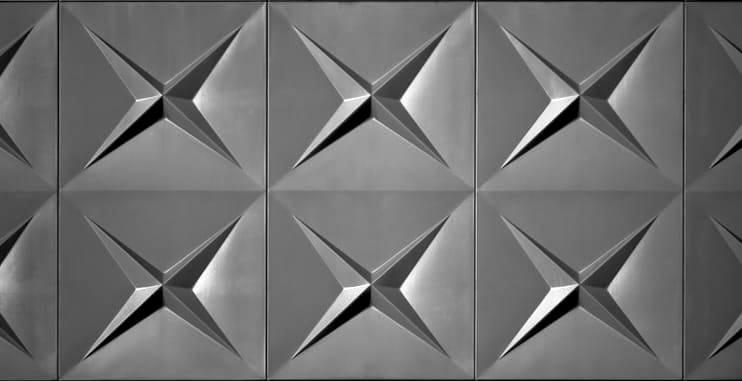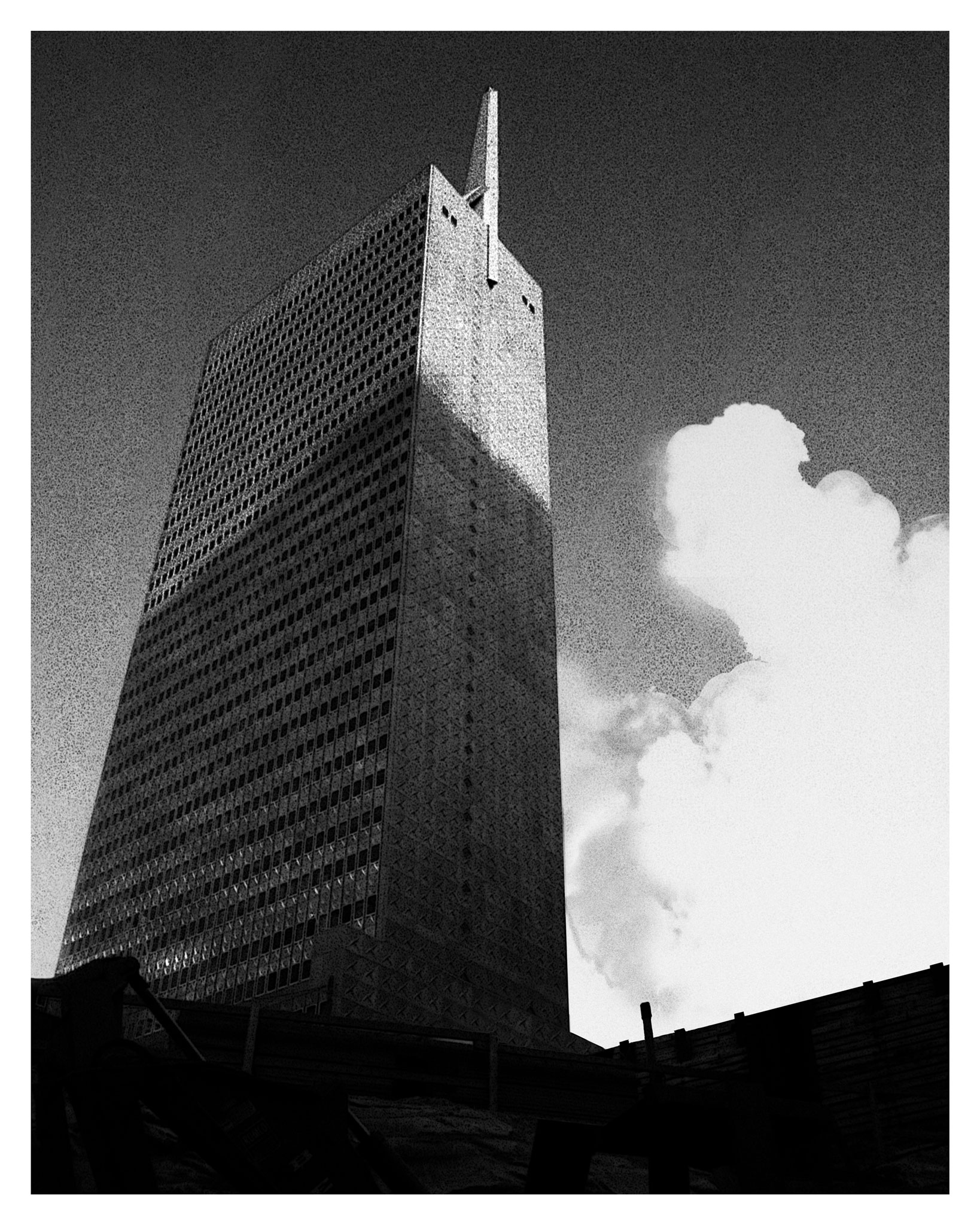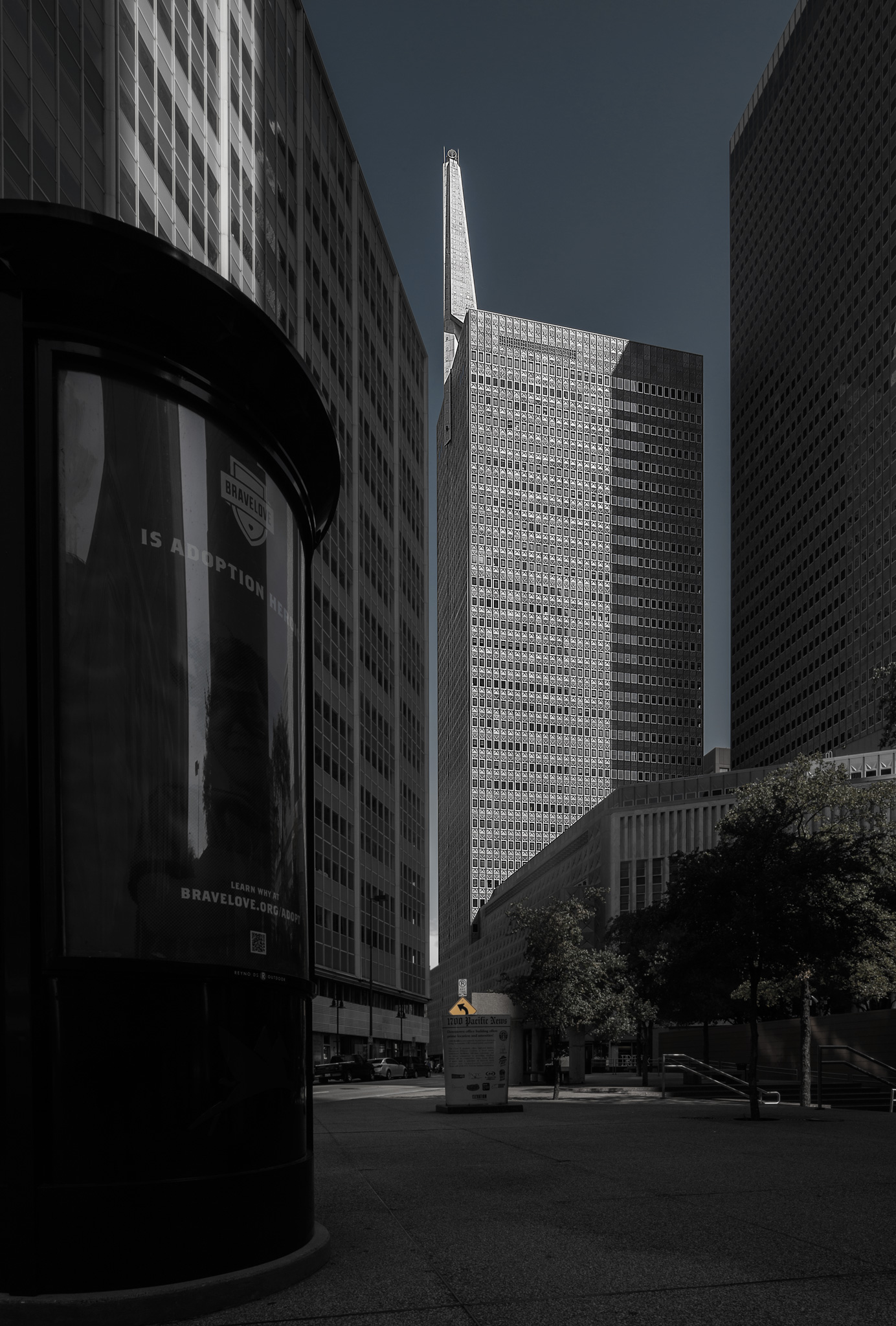Republic Rising
It still represents the future for Dallas.

I grew up in Dallas. Farmers Branch, a small suburb in the northwest, was my stomping ground. But every so often, we’d make our way into the city — to visit Aunt Willie and Uncle Tot in East Dallas, or to shop downtown at Sanger-Harris or Titche’s with Mom. And whenever we did, I had one unspoken mission: catch a glimpse of the Republic National Bank building.
It didn’t matter where we were headed. That soaring spire always commanded my attention. It pierced the sky like a rocket on standby — as if, at any moment, it might just launch. For a little boy with a head full of dreams and a heart full of wonder, it wasn’t just a building. It was a signal — a monument to possibility.
The sun was sinking fast. Shadows had already swallowed most of the pit. The only light came from the work lamps aimed at the core. I didn’t have much time.
For me, its timeless design evoked a future where all things were possible — where science and technology would make the Jetsons look like pioneers in Conestoga wagons. The four-pointed stars on the aluminum panels that clad the tower were its way of winking at the sky, saying, “Look at us! We’re on our way to the stars, too!”
Whenever I had the chance, I’d find a way to photograph it from a new angle — another way to honor this incredible structure. To me, it wasn’t just a skyscraper. It was a monolith — a solid lance thrust toward the heavens, a manmade statement of hope and ambition. Every time I caught sight of it, I felt something stir. The future had a shape, and this was it.
In 1981 — maybe ’82 — I drove downtown on a Sunday afternoon to explore a new project under construction called Thanksgiving Place. The site was freshly excavated, a giant scar in the earth some 40 to 50 feet below street level. In the center stood a core structure — raw concrete, still damp — where a lone worker was slowly polishing the surface with what looked like a floor sander.
There were no fences up. No eyes on me. Just an open gate and a long truck ramp curling down into the shadows. My fascination with construction sites kicked in. I glanced around, then made my way down the ramp. It took a full minute or more — that slope was made for heavy machinery, not people.
The sun was sinking fast. Shadows had already swallowed most of the pit. The only light came from the work lamps aimed at the core. I didn’t have much time.
I’d come prepared — a roll of Kodak 2475 Recording Film loaded into my camera. Back then, most film maxed out at ASA 400. But 2475 was a different beast — capable of being pushed to 1000, 2000, even 4000 ASA. Forgive the tech talk but there's a reason for it. It was grainy as hell, but that’s exactly what I wanted. It was the kind of film you used when you had to get the shot — a favorite of photojournalists, private eyes, and anyone who couldn’t afford to miss the moment.
I moved fast, trying to compose a few frames of the worker, the skeletal core, the exposed earth around us. Then I turned around.
And there it was.
The Republic National Bank building towered above the pit like a sentinel — protective, watching, timeless. The last rays of sunlight touched its top third in molten gold. Everything below it was in darkness, but that upper edge glowed like a beacon.
I scrambled into position, braced myself against a bulldozer, and tried to steady my breath. A long two-by-four leaned in front of me — I shifted just enough to get clear.
Click. Crank. Click. Crank. Click. Crank.
The light was gone.
I hiked back up the ramp, climbed into my car, and drove home, heart thudding. That night, I developed the film and printed what I’d captured. The image was imperfect — grainy to the point of looking like it had been rolled in sand — but the moment was pure. From that angle, with that light, with that film — it was a shot that couldn’t be taken again.
It’s still one of my favorite photographs I’ve ever made.
Today, the Republic National Bank building is surrounded by taller structures that have all but obliterated the view of this beautiful beast. It’s a shame, really. For me, today — as then — it still represents the future for Dallas.
Honestly, it almost feels as if the developers and city fathers who built around it were trying to hide it, as if they were ashamed of it. That may not be true — but it feels that way when I look at the building from any vantage point.
I wish more people could see it the way I did. The way I still do.
Not as a relic — but as a dream cast in metal and glass.
Not just a skyscraper — but a promise.
Which building or landmark in your town gives you a sense of pride or possibility, and why?
— Lawrence


Republic National Bank Building - Then and Now
Thanks for reading Still Stories! Subscribe for free to receive new posts and support my work.

